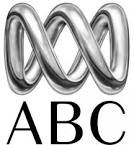With trust and confidence, Dr Redman stood for his workplace, ABC, a major public media in Australia. “[Public media] is less biased… [the content] is about what is important”, stated Dr Redman. He placed his argument as he led us through the topics of public media’s landscape, function, style, challenges and future.
l Definition, Function and Style
Definition & Its Landscape
Public media’s purpose is to serve the public, it can be in both old or new media form. It is generally government funded (at arm’s length) or license funded. Unlike commercial media which is all about the money, public media’s ultimate purpose is to serve the public instead of turning a profit. There are public media all over the world; generally their responsibility is about giving its audience a sense of their nationality. Additionally, public media’s function and communication style often includes ‘the press’ (ex: the insider), entertainment (drama), utility (weather report), social (cooking) and propaganda (ex: promoting the government). In Australia, public media includes ABC and SBS.
Even though both ABC and SBS are funded by government and supported by tax payment (SBS is also partly funded by private sectors as well), they may be seen as editorially independent as its working is governed by its own charters and funding Acts while neither one is a government charter. Thus, Australia’s public media may not be seen as part of the ‘public service’, but as a part of public charter with autonomy. And according to Dr Redman, such organization supports the process of democracy.
Building a Nation: Public Media as Public Good
“[Public media] certainly is in support of public and democratic processes-very important”, claimed Dr Redman. He accounted that ABC is doing this by providing ‘public value’ via embedding ‘public service ethos’, weighing public value against market impact and public consultation. This is done by uniting the nation through providing quality programs that cater all Australians across the whole country. Public media intends to achieve nation building that ensures all Australians get the content of ABC and SBS; this provides something ‘common’ among the whole nation. Such content is about national heritage (Australia’s history and natural beauty), national identity (who/ where do Australians come from), national conversations (Rugby League, The Ball etc). Also, Dr Redman added that ABC tends to distance itself from all vast interest and influence; thus, it provides programs in a liberated and independent way. However, this may only be the ‘prospect’ instead of the ‘reality’ of public media.
Possibility of Hidden Hegemony
I think it may be debatable that such view is too positive (and so does Dr Redman as he mentioned the risk of breeding ideologies in public media). Crowning public media as impartial ‘public good’ may hide the exercising of ideologies underneath the mask of such impression. It is almost impossible to have ‘provision for everyone in the country’-the question being is who is the one to judge who is the ‘Australians’ and what kind of nation is Australia? According to Davis and Mules (2006), this is where ideologies play in; they stated that “ideology is about the ‘ideas’ held in common by social groups in everyday life”, and as each social group has different interests, it is impossible for them to all hold the same idea of who and what consisted the nation of Australia. For example, while some social groups may propose ‘White Australia’ is the way others may reckon the real Australians are only the Aboriginals. Moreover, these discourses compete to be the dominant ideology that Australia should follow. Even though ABC and SBS intend to represent ‘both sides of the story’, it is unrealistic for them to include and represent all ideologies equally. From my perspective, I think the sense of ‘national identity and community’ that ABC and SBS intend to represent is that Australia is a Caucasian dominated yet multicultural society. Even though there may be other voices, as ABC and SBS are masked as the ‘neutral’ public media, they may create hegemony that mask the ideology they present as ‘truth’. It is the form of ideology in which the values and interests of the hegemonic group are experienced by others as already their own, and thus already consented to. We may be oriented to behave ourselves according to the hegemonic groups without knowing it because we are so indulged in it. Subsequently, I hardly agree with that public media “supported the public and democracy process” as ABC and SBS’s intention to reinforcing a certain nationality of Australia must be silencing some social groups in the society at the same time. However, I agree with Dr Redman that public media may be influenced by the impact of hegemony less as it is not directly controlled by forces as the state model and commercial media.
‘Like’ Quality News of Public Media
l Challenge
The challenge for public media in Australia is to inform ‘all Australians’ with balanced, accurate, relevant and quality production in an independent way while securing its ‘source’ of funding which comes from the government and companies (SBS). Australian public media’s role of being the watchdog of the funders constantly ‘bites the hand that feeds it’. According to Dr Redman, this has caused the funding of ABC to be dry and hugely impacts on its production quality. He states that government can indirectly limit ABC’s autonomy by its funding of certain projects and legislation. Hence, for the Australian public media, there is always political pressure. Such lack of political independence can be indicated by targeted funding. In addition, ABC’s control by other parties can be observed on their The Drum.com, whereas journalists’ opinions on political parties mostly reflect Liberal’s view (58%) while others are marginalized (Labour 31%, Green 7%, Independent 3%, Nationals 0%).
Also, public media which is commercialized may face commercial pressure as well. As a result, public media struggles to avoid allegation of bias.
l Future: Public Media 2.0
Due to the emergent of new media, the internet had created the environment of public media 2.0 for the current public media to adapt to. The internet which allows news being produced by and for the public had created a participatory culture. Such participatory culture may be seen as enhancing the ‘democratic process’ that Australian public media intends to achieve because anyone can get involved in the production of news. As Clark, the director of Future of Public Media Project stated, public media institution should play the leadership role to develop, standardized and publicized the content and environment of public media 2.0 while working with the public. Clark claims that by this way, public media can reach out more than its traditional demography of mass audience and provide a more equalized platform for all to have a say.
Recounting from the understanding I gained in the lecture whereas Dr Redman talked about new media, he said that there is no going back for the news media to not get involved with internet because everyone and everything is on internet today. Thus, I think it is not an ‘option’ for the current institutions to upgrade to public media 2.0; it’s indeed, a ‘must’. I observed that all my friends mostly get their news from internet instead of TV; therefore, if public media want to continue to survive within the coming generations, starting to prepare and set up public media 2.0 now may allows it to win at the starting line and secure its social status.
l Extra Material
l Australian public media
l The future and challenge of Public Media
(UQ Library Materials (Login with UQ ID)
l The future of public media
l Content online and the end of public media? The U.K an canary in the coal mine?
l Private Equity is a problem for public media











No comments:
Post a Comment